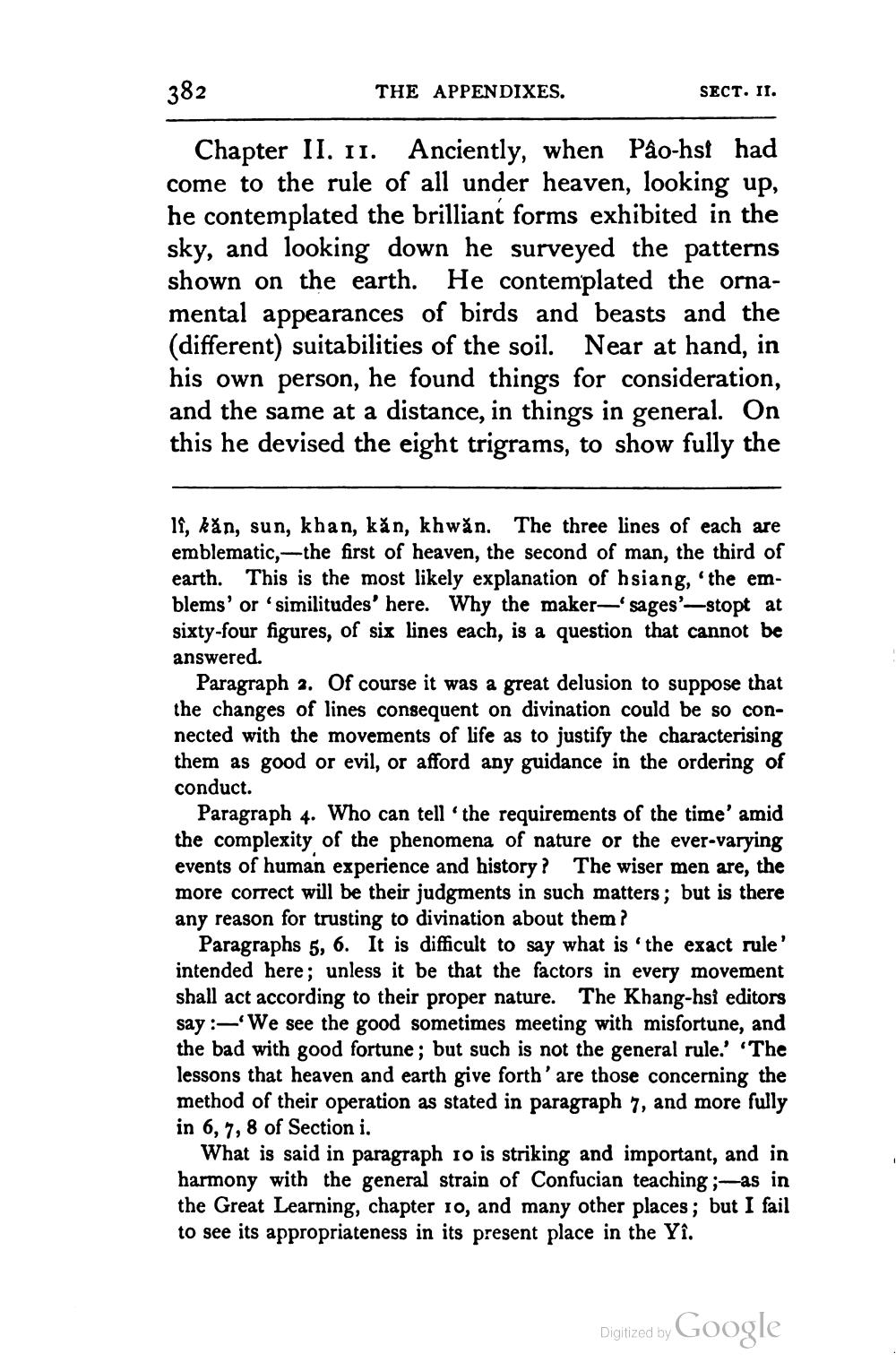________________
382
THE APPENDIXES.
SECT. II.
Chapter II. 11. Anciently, when Pâo-hst had come to the rule of all under heaven, looking up, he contemplated the brilliant forms exhibited in the sky, and looking down he surveyed the patterns shown on the earth. He contemplated the ornamental appearances of birds and beasts and the (different) suitabilities of the soil. Near at hand, in his own person, he found things for consideration, and the same at a distance, in things in general. On this he devised the eight trigrams, to show fully the
11, kån, sun, khan, kăn, khwăn. The three lines of each are emblematic,—the first of heaven, the second of man, the third of earth. This is the most likely explanation of hsiang, the emblems' or 'similitudes' here. Why the maker-sages'-stopt at sixty-four figures, of six lines each, is a question that cannot be answered.
Paragraph 2. Of course it was a great delusion to suppose that the changes of lines consequent on divination could be so connected with the movements of life as to justify the characterising them as good or evil, or afford any guidance in the ordering of conduct.
Paragraph 4. Who can tell the requirements of the time' amid the complexity of the phenomena of nature or the ever-varying events of human experience and history? The wiser men are, the more correct will be their judgments in such matters; but is there any reason for trusting to divination about them?
Paragraphs 5, 6. It is difficult to say what is the exact rule' intended here; unless it be that the factors in every movement shall act according to their proper nature. The Khang-hsi editors say :- We see the good sometimes meeting with misfortune, and the bad with good fortune ; but such is not the general rule.' "The lessons that heaven and earth give forth' are those concerning the method of their operation as stated in paragraph 7, and more fully in 6, 7, 8 of Section i.
What is said in paragraph 10 is striking and important, and in harmony with the general strain of Confucian teaching ;-as in the Great Learning, chapter 10, and many other places; but I fail to see its appropriateness in its present place in the Yî.
Digitized by Google




